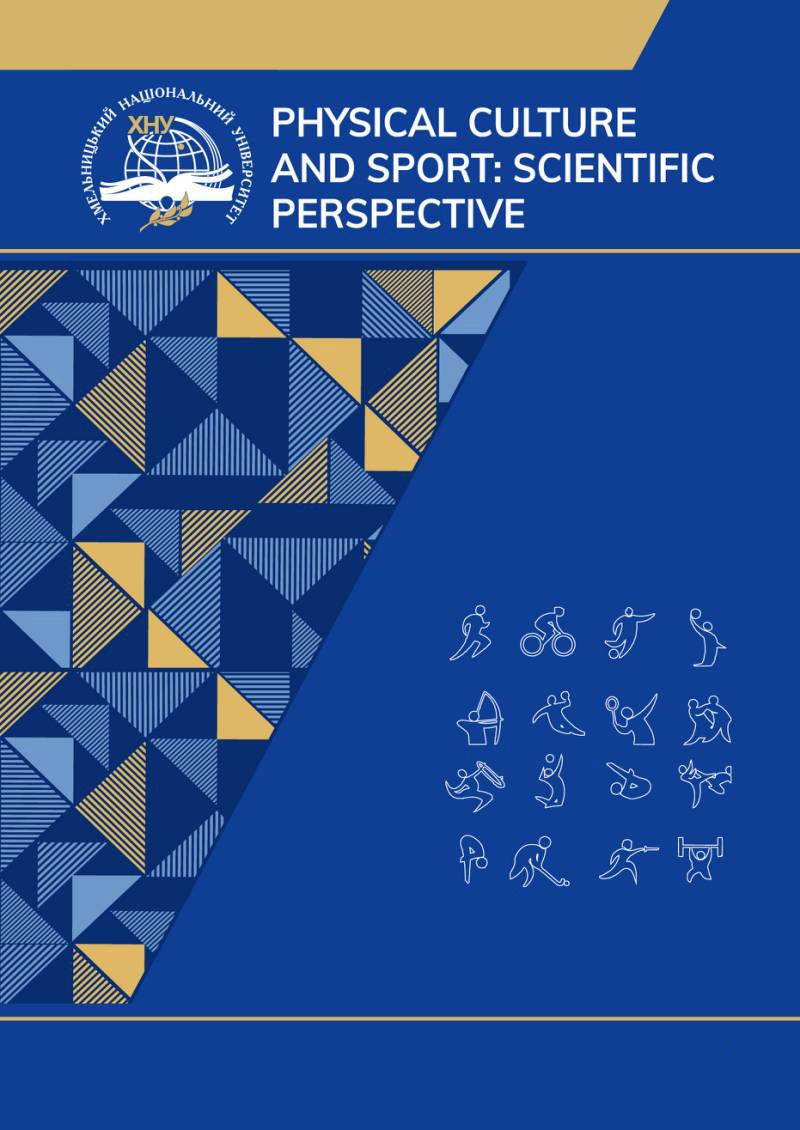The application of swimming in improving the functional state of the muscle-muscle system in children 8-9 years old with scoliosis
DOI:
https://doi.org/10.31891/pcs.2024.1.59Keywords:
scoliosis, aquatic environment, functional state, swimming, childrenAbstract
The positive effect of water swimming on the correction of scoliosis in children is noted due to the hydrodynamic pressure, which is evenly distributed over the body surface. This helps support the spine and reduce the load on muscles and joints, which is especially important in scoliosis. The purpose of the study: to theoretically substantiate the peculiarities of the use of swimming in improving the functional state of the musculoskeletal system in children 8-9 years old with scoliosis. Research methods. The work used the methods of the theoretical level of research: analysis, comparison, induction, deduction, systematization and generalization of scientific and methodical literature. Work results. Swimming used to correct scoliosis is a science-based rehabilitation method that uses the aquatic environment to improve physical fitness and reduce symptoms of musculoskeletal disorders. Aquatic exercises, in addition to their corrective functions achieved through a higher resistance environment, have a positive effect on increasing strength and endurance in children with scoliosis. Studies have shown that children who are engaged in swimming have achieved significantly better values of the functional state of the external breathing system, a decrease in the curvature of the scoliosis angle and spinal curves in the sagittal plane. Conclusions. Thus, swimming becomes an important tool in the rehabilitation of children with scoliosis, helping to solve physical problems and improve their general condition. This method is based on the principles of hydrodynamic pressure and contributes to the comprehensive physical development of children, increasing their quality of life and the functional state of the musculoskeletal system.
References
Aloshyna, A.I. (2015). Profilaktyka y korektsiia funktsionalnykh porushen oporno-rukhovoho aparatu ditei ta molodi u protsesi fizychnoho vykhovannia [Prevention and correction of functional disorders of the musculoskeletal system of children and youth in the process of physical education]: dys. d-ra nauk z fizychnoho vykhovannia ta sportu : 24.00.02. Lutsk, 404 s. [in Ukrainian]
Barczyk, K., Zawadzka, D., Hawrylak, A., Bochenska, A., Skolimowska, B., Małachowska-Sobieska, M. (2009). The influence of corrective exercises in a water environment on the shape of the antero-posterior curves of the spine and on the functional status of the locomotor system in children with I° scoliosis. Ortop. Traumatol. Rehabil, № 11 (3), 209–221.
Barczyk, K., Skolimowski, T., Zawadzka, D. (2005). Changes in body posture in children with first-degree scoliosis taking part in corrective exercises in a water environment. Ortop. Traumatol. Rehabil., Vol. 7 (2), 180–185.
Durmala J, Dobosiewicz K, Jendrzejek H, Pius W. (2022). Exercise efficiency of girls with idiopathic scoliosis based on the ventilator anaerobic threshold. Stud Health Technol Inform., 91, 357–360.
Ivashchenko, O., Khudolii, O., Iermakov, S., Lochbaum, M., Cieślicka, M., Zukow, W., Nosko, M., Yermakova T. (2017). Methodological approaches to pedagogical control of the functional and motorfitness of the girls from 7-9 grades. Journal of Physical Education and Sport, 17(1), 254–261.
Monticone, M, Ambrosini, E, Cazzaniga, D, Rocca, B, ferrante S. (2014). Active self-correction and task-orientated exercises reduce spinal deformity and improve quality of life in subjects with mild adolescent idiopathic scoliosis. Results of a randomized controlled trial. Eur Spine J., 23(6), 1204–1114.
Pawelec, K., Zawadzka, D., Sidorowska, M., Szadkowska, M., Hawrylak, A., Wójtowicz, D. (2012). The influence of exercises in the water on the mobility of the chest and shape of spine in sagittal plane of children with scoliosis I°. Acta Bio-Optica et Informatica Medica., 18 (1), 9–14.
Rigo, M, Villagrasa, M, Gallo, D. (2010). A specific scoliosis classification correlating with brace treatment: description and reliability. Scoliosis, 5, 11-18.
Weiss, HR, Goodall, D. (2008). The treatment of adolescent idiopathic scoliosis (AIS) according to present evidence. A systematic review. Eur J Phys Rehabil Med, 44(2), 177–193.
Weiss, HR, Maier-Hennes, H. (2008). Specific exercises in the treatment of scoliosis–differential indication. Stud Health Technol Inform., 135, 173–190.
Weiss, HR. (2012). Physical therapy intervention studies on idiopathic scoliosis: review with the focus on inclusion criteria. Scoliosis, 7(4), 1–11.





